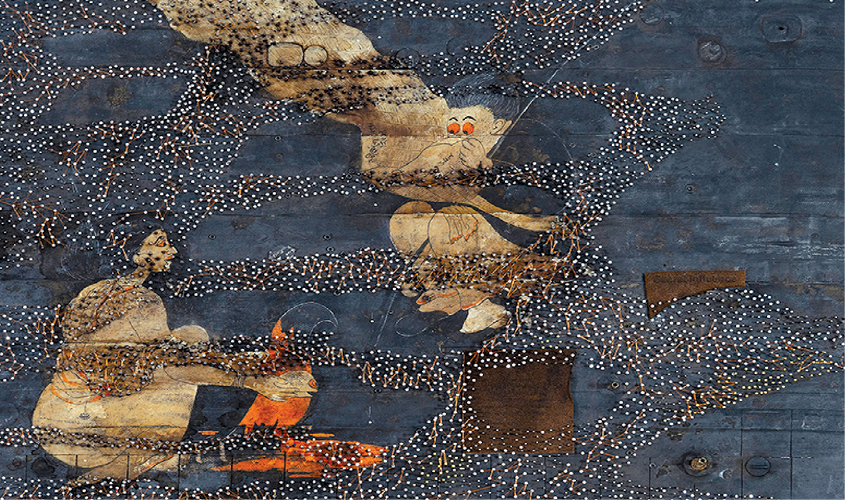A new show, titled, Persistence of Memory, going on at Mumbai’s Akara Art brings to fore the intrinsic relationship thet existes between a painted image and human memory. In a large way, what distinguishes this process from many other image making methods is the arc of time in which it is made and changed by the process of re thinking, reworking and redoing—a transformation always beside and beyond the first idea and sketch of it.
The artists in this exhibition frequent this process in their own ways—often creating works carrying multiple meanings through their varied
The exhibition displays works by Anil Thambai, Anupama Alias, Ekta Singha, Kaushik Saha, Prasad K.P., Sajeev Visweswaran, Sujith S.N.
Anil Thambai revisits the process of building a piece of architecture. In his drawings of different kinds of buildings, he is evoking nostalgia for lost time through which a piece of architecture emerges. He investigates the relationship between space in its physicality and in its temporality. Though none of his drawings refer to a specific building that we can identify, he is able to instill an image of buildings from a shared historical past, that are perhaps fictional and/or no longer exist.
Sujith S.N.’s current body of work takes from two processes as references—he took photos along with his studies in watercolour as the two methods of documentation of Dahisar River in the suburbs of Mumbai. In his painting about the river, he traces its decay over the seven years that he has lived in the city. The decadence of the river poses an ethical question and he constantly engages with it in his current body of work. What constitutes the idea of a river especially after a tumultuous change has occurred in the landscape because of it? What happens to the creatures inside the river and the ones around it when it becomes stagnant and is no longer a source of life? He reflects on the idea of the changing river but still keeps room for the painting to lend its own voice and interpretation. He leaves the viewer with an expression poetic in its rendering and accidental in its meaning.
Evidently, the painting of a landscape conceals more meanings than it reveals under the garb of its obvious beauty. One can see this in the recent body of work by Prasad K.P., an artist from rural Kerala. Prasad has a love for nature and depicting the landscape, and within that dwells a longing for and a belief in a utopic view of the world. The everyday life in the village is a source of inspiration for Prasad and he is fascinated by the inter relationship between humans, animals, insects, plants, birds and even rocks, mountains in this context. His work provides a carefully meditated outlook to this world view where landscape and beauty are intertwined to portray what is essential about life.
Persistence of Memory is on view till 9 June

